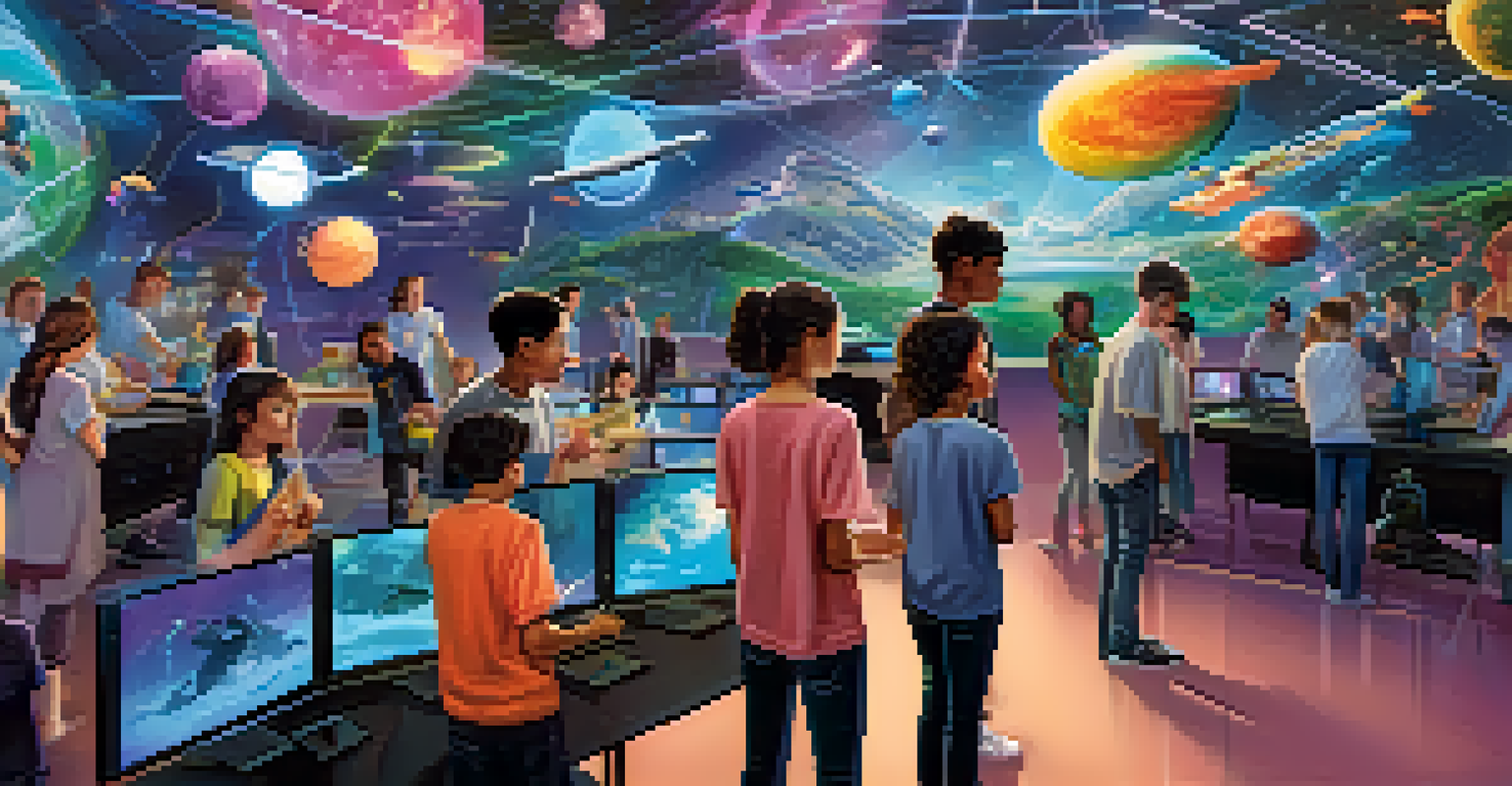Exploring the Connection Between Gamification and Student Retention

Understanding Gamification in Education
Gamification involves integrating game-like elements into non-game contexts, such as education. This approach aims to increase engagement by making learning more interactive and enjoyable. By incorporating elements like points, badges, and leaderboards, educators can tap into students' natural competitive instincts.
Gamification works best when it’s seamlessly integrated into the learning process to create an engaging environment that motivates students to excel.
For instance, a math teacher might use a points system for completing assignments, turning homework into a fun challenge. This not only motivates students but also encourages them to track their progress. As students see their scores rise, they become more invested in their learning experience.
Ultimately, gamification transforms traditional learning into an engaging adventure, which can significantly impact student retention. When students feel excited about their education, they're more likely to stick around and take an active part in their academic journey.
The Role of Engagement in Student Retention
Engagement is crucial for student retention, as it directly influences a student's connection to their institution. When students are actively engaged, they are more likely to feel a sense of belonging and commitment to their studies. This emotional connection can be a powerful motivator for continued enrollment.

For example, schools that implement gamification often report higher levels of student engagement. Activities that challenge students and reward their achievements foster a positive learning environment. This sense of achievement not only boosts confidence but also encourages students to pursue their goals.
Gamification Boosts Student Engagement
Incorporating game-like elements in education enhances engagement by making learning more interactive and enjoyable.
As we explore the link between gamification and retention, it's clear that increasing engagement is a key factor. When students are excited about their education, they are less likely to drop out and more likely to thrive in their academic pursuits.
Gamification Techniques That Improve Retention
Various gamification techniques can enhance the educational experience and improve retention rates. These include elements like progress tracking, collaborative tasks, and instant feedback. Each of these techniques aims to create a more dynamic and participatory learning atmosphere.
The most effective way to teach is to engage the learner's mind and heart, using methods that draw them into the learning experience.
For example, progress tracking allows students to visualize their achievements over time. This not only boosts motivation but also encourages them to set and reach personal goals. Additionally, collaborative tasks such as team-based challenges foster a sense of community, making students feel more connected to their peers.
By employing these techniques, educators can create an environment where students are eager to participate. When students feel supported and challenged, they are more likely to persist in their studies, leading to better retention rates.
The Psychological Impact of Gamification
Gamification not only makes learning fun but also taps into psychological principles that drive behavior. Concepts like intrinsic motivation, where students are driven by internal satisfaction, play a significant role in retention. When students find joy in learning, they are more likely to stay engaged.
Moreover, positive reinforcement through rewards can enhance students' self-esteem and encourage ongoing participation. For instance, earning a badge for completing a challenging project can validate a student's effort and spur them on to tackle future challenges with enthusiasm. This cycle of achievement fosters a growth mindset.
Engagement Drives Student Retention
Higher levels of student engagement foster a sense of belonging, increasing the likelihood of continued enrollment.
Understanding the psychological impact of gamification helps educators design better learning experiences. By addressing students' emotional and cognitive needs, gamification can lead to improved retention rates and ultimately a more fulfilling educational journey.
Case Studies: Successful Gamification in Schools
Several educational institutions have successfully implemented gamification strategies, resulting in increased student retention. For instance, a high school introduced a gamified learning platform that allowed students to earn rewards for completing tasks and collaborating with peers. The result? A noticeable spike in student participation and a decrease in dropout rates.
Another example is a university that integrated video game elements into its online courses. Students could earn points for attending lectures and completing assignments, leading to higher engagement levels. This innovation not only improved retention but also enhanced the overall learning experience.
These case studies highlight how gamification can impact student retention positively. By showcasing real-world successes, educators can draw inspiration to implement similar strategies in their own institutions.
Challenges of Implementing Gamification
While gamification has many benefits, it comes with its own set of challenges. One major hurdle is the potential for students to become overly focused on rewards rather than the learning process itself. This shift in focus may lead to superficial engagement rather than deep understanding.
Additionally, educators must carefully design gamification elements to ensure they align with learning objectives. If the game mechanics do not enhance the educational experience, they may detract from it. Teachers need to strike a balance between fun and educational value to maximize the effectiveness of gamification.
Challenges in Gamification Implementation
While gamification offers benefits, educators must carefully design elements to ensure they enhance learning without overshadowing it.
By acknowledging these challenges, educators can better prepare for successful gamification implementation. A thoughtful approach ensures that gamification enhances learning without compromising its intrinsic value.
Future Trends in Gamification and Education
As technology continues to evolve, so does the potential for gamification in education. Future trends may include the use of virtual reality (VR) and augmented reality (AR) to create immersive learning experiences. These advancements could further engage students and enhance retention by providing unique learning environments.
Moreover, the integration of artificial intelligence (AI) into gamified systems could allow for personalized learning experiences. AI can analyze student performance and adapt challenges to fit individual needs, ensuring that all learners remain engaged and supported. This level of customization could revolutionize retention strategies.

Looking ahead, the possibilities for gamification in education are vast. By embracing emerging technologies, educators can create innovative strategies that not only captivate students but also improve retention rates in meaningful ways.